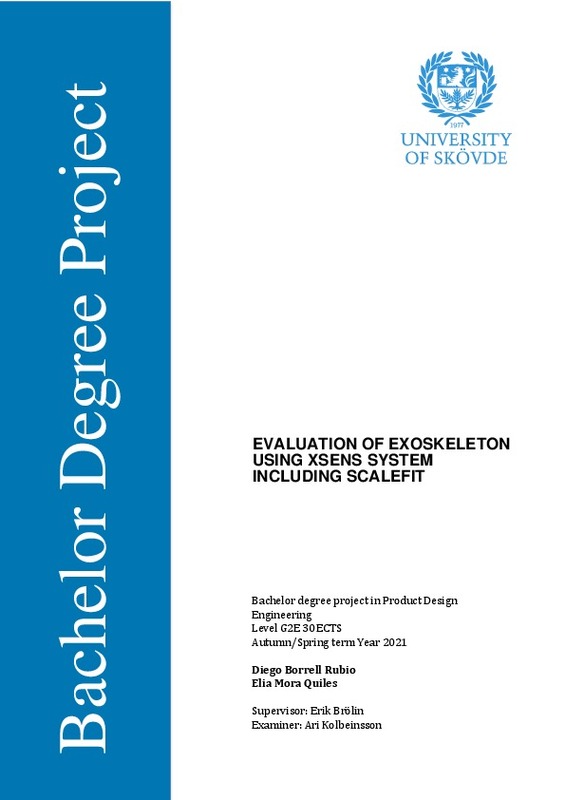|
Resumen:
|
[EN] Although the level of automation in the automotive industry is currently very high, the human factor is still required for assembly tasks, especially for overhead tasks. This type of work causes many injuries in workers ...[+]
[EN] Although the level of automation in the automotive industry is currently very high, the human factor is still required for assembly tasks, especially for overhead tasks. This type of work causes many injuries in workers in this sector, especially musculoskeletal disorders (MSDs), being one of the main causes for inability to work in developed countries and, in turn, becoming a significant health problem. With the aim of reducing this type of ailments caused during the development of this type of operations during assembly processes, various options are currently being considered where technology and the human factor can be combined, among them we find the object of study of this project, an exoskeleton. This project will study the biomechanical effects as well as the ergonomics of a passive exoskeleton called "PAEXO", developed by the company "Ottobock" with the aim of relieving tensions in the shoulder joints and upper part of the shoulders, during its use in assembly tasks. For this purpose, an experiment will be designed in which several participants will carry out a series of tasks both with and without the exoskeleton, in such a way that the effects of its use and how they affect the users of the product can be observed. For the evaluation of the product, use will be made of the "Xsens" motion capture system, specifically the "Awinda" model, and this system will be used together with the "ScaleFit" software, a biomechanical measurement system, as well as questionnaires for the participants.
[-]
[ES] Aunque actualmente el nivel de automatización en la industria automovilística es muy alto, aún se requiere de personal y del factor humano para tareas de ensamblaje, en especial para tareas llevadas a cabo con los ...[+]
[ES] Aunque actualmente el nivel de automatización en la industria automovilística es muy alto, aún se requiere de personal y del factor humano para tareas de ensamblaje, en especial para tareas llevadas a cabo con los brazos elevados sobre la cabeza, este tipo de tareas ocasionan gran número de lesiones en los trabajadores de este sector, en especial trastornos musculoesqueléticos (TME), siendo una de las mayores causas de baja en países desarrollados y a su vez, convirtiéndose en un problema significante para la salud. Con el objetivo de reducir este tipo de dolencias ocasionadas durante el desarrollo de este tipo de operaciones durante procesos de ensamblaje, actualmente se barajan diversas opciones donde compaginar tecnología y factor humano, entre ellas encontramos el objeto de estudio de este proyecto, un exoesqueleto. En este proyecto se va a estudiar los efectos biomecánicos así como la ergonomía de un exoesqueleto pasivo llamado ¿PAEXO¿, desarrollado por la empresa ¿Ottobock.¿ con la finalidad de aliviar tensiones en las articulaciones de los hombros y parte superior de los hombros, durante su uso en tareas de ensamblaje. Para ello se diseñará un experimento donde varios participantes realizarán una serie de tareas tanto con exoesqueleto como sin este, de tal forma que permitirán observar los efectos del uso de este y como afectan a los usuarios del producto. Para la evaluación del producto, se hará uso del sistema de captura de movimiento "Xsens", en específico del modelo "Awinda", a su vez este sistema se utilizará junto con el software "ScaleFit", un sistema de medición biomecánico, así cómo cuestionarios a los participantes.
[-]
|







